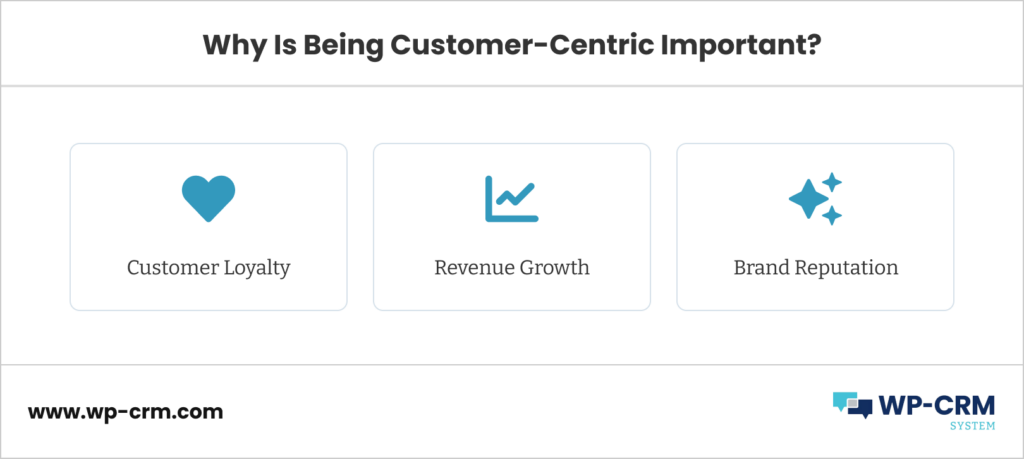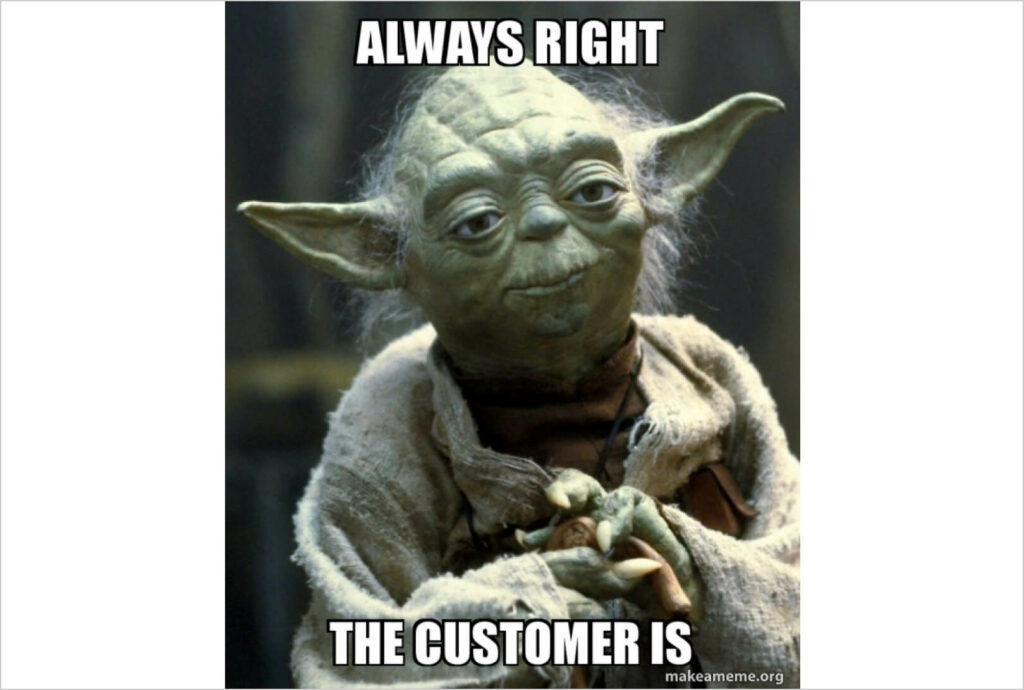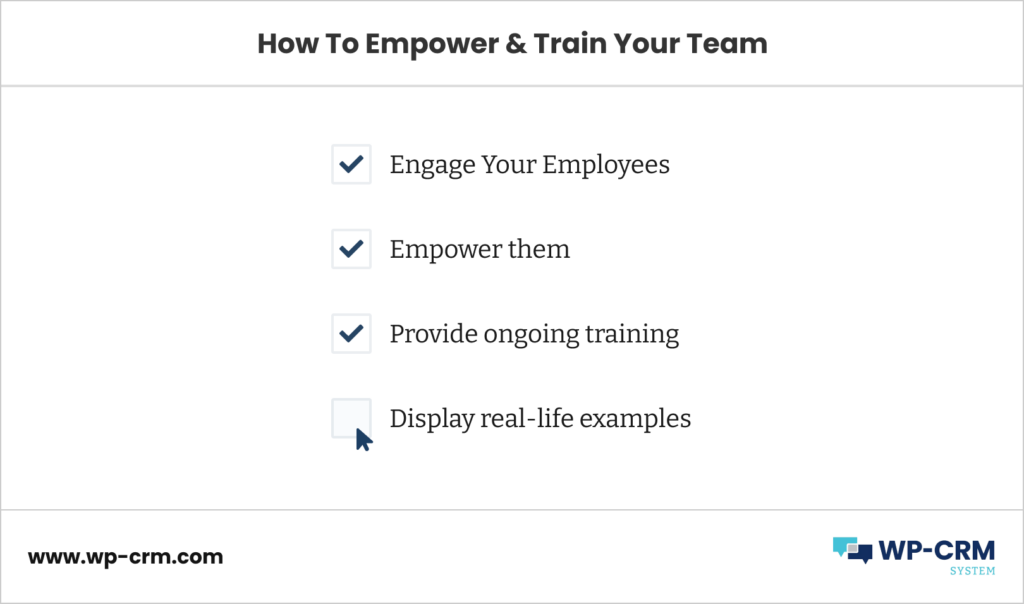Building a Customer-Centric Organization: Strategies for Putting Customers First
Ever wondered how much a bad customer service experience can cost a business? Here’s a staggering statistic: In the United States alone, a whopping $4.7 trillion is lost yearly because customers switch brands after receiving subpar customer service. Therefore, building a customer-centric organization should be your top priority!
The customer-centric approach has become a non-negotiable imperative in today’s fiercely competitive business landscape. More is needed to offer a great product or service; putting customers at the forefront is the key to success.
So, in this article, we’re diving headfirst into the world of customer-centricity and exploring strategies to help you put your customers first.
Understanding the Power of A Customer-Centric Organization
When we talk about building a customer-centric organization, we’re referring to a business approach that places the customer at the heart of everything. It means going beyond merely satisfying customers and striving to exceed their expectations at every touchpoint.
But why does being customer-centric matter? Well, let me share some eye-opening statistics and examples that highlight its impact:

- Customer Loyalty. Customer-centric organizations understand this and prioritize building strong customer relationships. They earn customer loyalty by consistently delivering exceptional experiences, resulting in repeat business and positive word-of-mouth referrals.
- Revenue Growth. According to research, customer-centric companies outperform their competitors in revenue growth by a significant margin. When customers feel valued and understood, they are more likely to spend more, become brand advocates, and even stick around during challenging times.
- Brand Reputation: Customer-centric organizations cultivate a positive brand reputation. Customers who consistently receive personalized attention, prompt responses, and exceptional service become loyal ambassadors for your brand. Their positive reviews and recommendations help attract new customers, boosting your brand’s reputation.
It’s crucial to note that customer-centricity is not just a trendy buzzword. It requires a fundamental shift in mindset throughout the entire organization. It’s about understanding that every decision and action should revolve around delivering value and meeting customer needs. This strategic approach fosters a customer-centric culture where every employee understands the importance of putting customers first.
Putting Customers at the Core of Your Business

Placing customers at the core of everything you do is crucial to building a customer-centric organization. Here’s how:
- Customer-First Mindset: A customer-first mindset should permeate all levels of your organization. From leadership to frontline employees, everyone should understand and prioritize the needs and desires of their customers. Encourage a culture that values exceptional customer experiences and fosters a deep understanding of their preferences and pain points.
- Aligning Company Goals with Customer Needs: It’s essential to align your company’s goals and objectives with the needs and expectations of your customers. This alignment ensures that every decision, product, or service you offer is designed to address customer pain points and create value. You can drive customer satisfaction and long-term loyalty by aligning your goals with customer-centricity.
- Gathering Customer Insights: To understand your customers truly, you need to gather insights directly from them. This can be done through various methods, such as customer surveys, interviews, and analyzing customer data. Surveys provide valuable quantitative data, while interviews allow for deeper qualitative insights. Additionally, analyzing customer data can help identify trends, preferences, and areas for improvement.
- Creating Buyer Personas: Buyer personas help you better understand your target audience’s demographics, preferences, motivations, and pain points. Creating accurate and detailed buyer personas allows you to tailor your marketing strategies, product development, and customer interactions to meet their needs.
By putting customers at the core of your business, you create a customer-centric ecosystem that drives customer satisfaction, loyalty, and advocacy. Remember, more is needed to have a great product or service; you must continuously strive to understand and fulfill your customers’ needs.
Enhancing Customer Experience
Delivering exceptional customer experiences is a key element of building a customer-centric organization. Here’s how you can take your customer interactions to the next level:
- Significance of Exceptional Experiences: Exceptional customer experiences are a game-changer. They create positive emotions, build trust, and foster long-term customer loyalty. When customers have a memorable and satisfying experience with your brand, they are more likely to become repeat customers, refer others to your business, and even forgive occasional missteps.
- Improving Customer Interactions: Whether online or offline, every customer interaction is an opportunity to make a positive impression. Provide training to your employees to ensure they possess strong communication skills, empathy, and the ability to effectively handle customer inquiries and concerns. Create a seamless and user-friendly online experience that is intuitive and responsive to customer needs.
- Personalization and Customization: Customers appreciate personalized experiences catering to their preferences and needs. Leverage customer data to customize interactions, offers, and recommendations. Tailoring your communications to address customers by name and provide relevant product suggestions based on their purchase history.
- Role of Customer Feedback: Customer feedback is a powerful tool for continuous improvement. Encourage customers to provide feedback. For example, you can conduct surveys, reviews, and actively respond to queries on social media channels. Analyze their suggestions to identify areas where you can enhance the customer experience and implement necessary improvements. Engage with customers by responding to their feedback promptly, demonstrating that you value their input.
Empowering and Training Your Team

Having an engaged and customer-focused workforce is vital for building a customer-centric organization. Here’s how you can empower your team to deliver exceptional customer satisfaction:
- Importance of an Engaged Workforce: An engaged workforce is enthusiastic, motivated, and committed to delivering exceptional customer experiences. Employees’ passion for work and customer impact translates into positive interactions and genuine care. Emphasize the significance of customer satisfaction and each employee’s role in achieving it.
- Empowering Employees: Encourage employees to take ownership of customer satisfaction by giving them autonomy and authority to make decisions that benefit the customer. Empower them to go the extra mile, resolve issues, and exceed customer expectations.
- Ongoing Training and Development: Continuous training and development programs focused on customer service and communication skills are crucial for equipping your team with the tools they need to succeed. Provide regular training sessions, workshops, and resources that enhance their customer-centric skills. This includes active listening, problem-solving, empathy, and effective communication.
- Real-life Examples: Highlight real-life examples of companies successfully empowering employees to deliver outstanding customer experiences. Share stories of employees going above and beyond to resolve customer issues or create memorable moments. These examples inspire and demonstrate employee empowerment’s positive impact on customer satisfaction and loyalty.
Measuring and Monitoring Customer Centricity
Here’s what you need to know:
- Need for Metrics and KPIs: Metrics and Key Performance Indicators (KPIs) are essential for quantifying the impact of your customer-centric initiatives. By establishing clear metrics, you can measure the success of your customer-centric strategies and make data-driven decisions.
- Key Metrics: Several key metrics help gauge your organization’s customer-centricity level. Customer satisfaction is a fundamental metric that measures your customers’ satisfaction with their overall experience. Net Promoter Score (NPS) assesses how loyal your customers are to your brand. . Customer lifetime value (CLV) quantifies the long-term value of a customer to your business. These metrics offer valuable insights into customer perception and loyalty.
- Role of Customer Feedback and Reviews: Customer feedback and reviews provide invaluable insights into customer sentiment and satisfaction levels. Actively seek feedback through surveys, customer interviews, and online review platforms. Analyze this feedback to identify patterns, strengths, and areas for improvement. Customer feedback is a powerful tool for understanding customer needs, identifying pain points, and driving continuous improvement.
- Importance of Regular Performance Reviews: Regular performance reviews are essential for assessing how well your organization delivers on its customer-centric goals. Conduct comprehensive evaluations of individual and team performance, focusing on customer-centric behaviors, communication skills, and adherence to customer service standards. Performance reviews provide an opportunity to recognize outstanding performance and address areas that require improvement.
Continuous improvement efforts are crucial in maintaining and advancing a customer-centric organization. Regularly analyze data, review performance, and implement necessary changes to ensure ongoing alignment with customer needs and expectations.
Final Thoughts
You can unlock many benefits by prioritizing exceptional customer experiences, aligning company goals with customer needs, and empowering your team. Improved customer loyalty, increased revenue, and competitive advantage are rewards for those who embrace customer-centricity.
Now, it’s your turn to take action. Implement the strategies and tips discussed in this article, gather customer insights, enhance customer interactions, empower your team, and continuously measure and monitor your progress.
Putting customers first drives business success and creates a customer-centric culture that sets you apart. Your customers deserve the best, and by making them the focal point of your organization, you’ll be on the path to success.
Author bio: Josef Mohamed is a Content Marketer, SEO strategist, and Web Designer who writes about Marketing, Technology, and other related topics. He founded Josefmohamed.com and Blissa.de, where he shares his knowledge and expertise.

